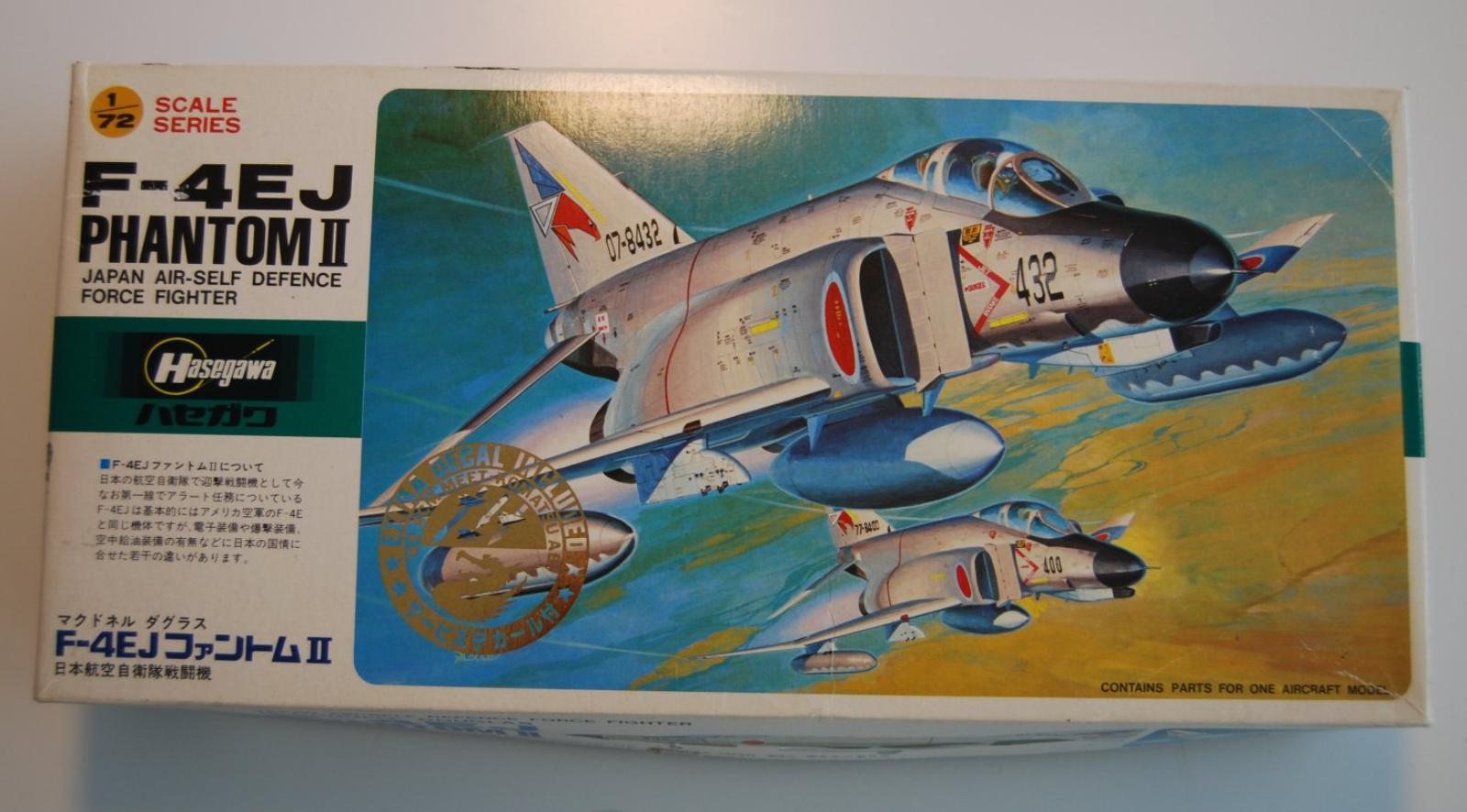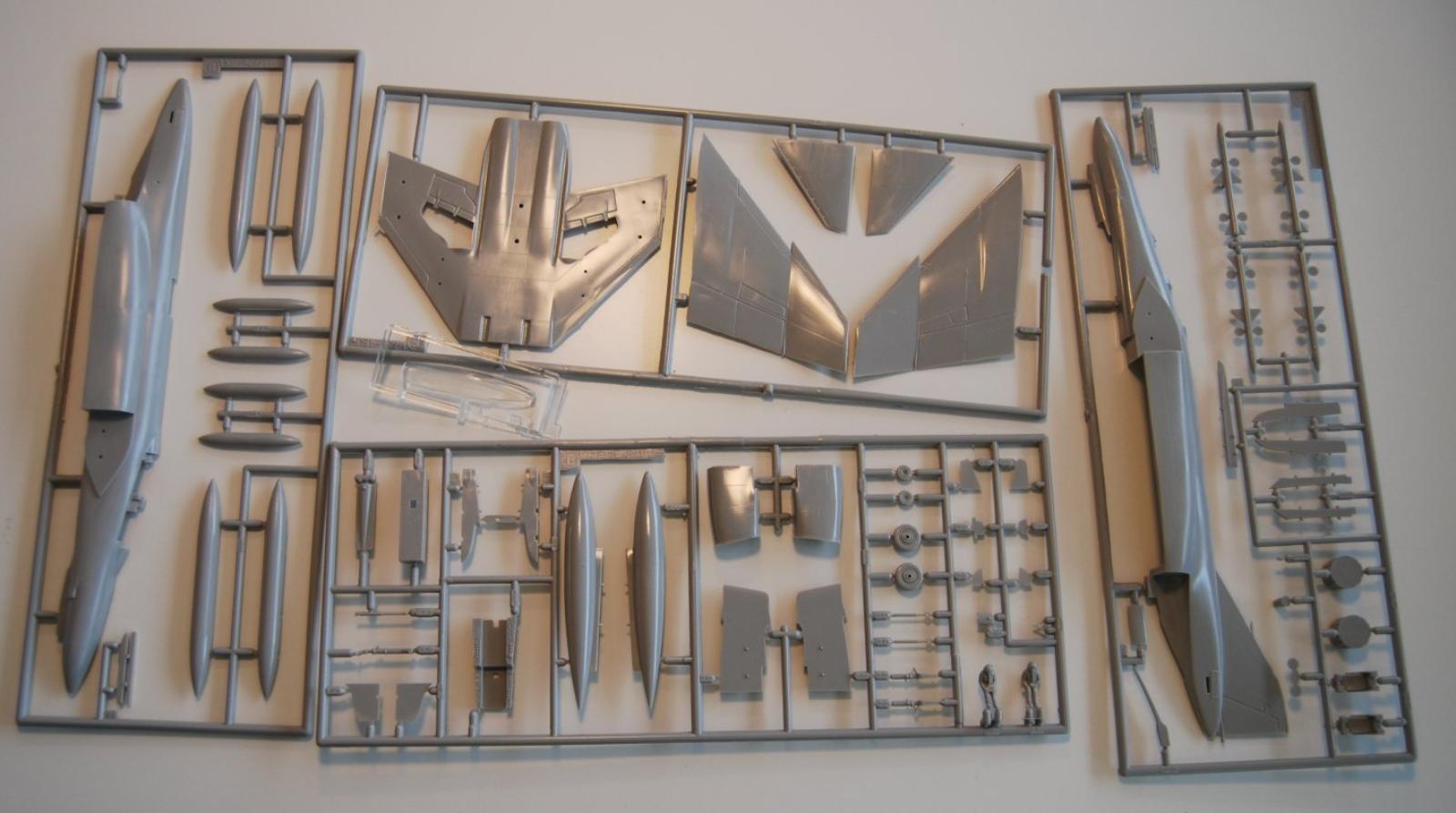Manufacturer: Hasegawa
Scale: 1/72
Additional parts: none
Model build: May - Aug 2017

Manufacturer: Hasegawa
Scale: 1/72
Additional parts: none
Model build: May - Aug 2017
The North Atlantic in December was a beast. Lieutenant Commander Kai Muller gripped the control stick of his F4N Phantom, the fierce wind buffeting the sleek jet like a fly on a windshield. Graf Zeppelin, the carrier that had been his home for the past decade, pitched and rolled on the churning waves, a precarious platform for their dance with danger.
Muller wasn't new to this dance. He'd been one of the first pilots to qualify on the carrier-borne F4N, a marvel of German engineering cobbled together from the land-based F4F. The Navy had lobbied hard for the Phantoms, their twin engines and potent firepower a perfect fit for patrolling the GIUK gap, the vital chokepoint between Greenland, Iceland, and the United Kingdom.
Today, however, the mission felt different. A Soviet Tu-95 Bear bomber had been spotted skirting the edge of NATO airspace. Routine patrol had turned into a potential powder keg. Muller glanced at his co-pilot, Captain Nadia Schmidt, her green eyes narrowed in fierce concentration. They were a well-oiled machine, their unspoken communication honed over countless missions.
Suddenly, the ship lurched violently. Red warning lights flared on the instrument panel. An enormous wave slammed against the deck, sending a rogue spray that iced up the windscreen momentarily. Muller fought to maintain control, his knuckles white on the stick.
Muller's heart hammered against his ribs. A land-based recovery was impossible in this weather. They were committed to landing, and the odds weren't good.
He lined up with the pitching deck, the arrestor hook extended like a desperate claw. The impact shuddered through the plane, the G-force pinning him to his seat. The hook snagged the arresting wire, a screech of metal tearing through the howling wind.
But it wasn't enough. The wire snapped, the plane juddering violently. Muller fought with all his might, his years of experience kicking in. He managed to vector the crippled jet away from the superstructure, the ocean rushing up to meet them.
Just before impact, a searing flash of light and a deafening boom filled the air. Muller squeezed his eyes shut, bracing for the end.
He awoke to the sound of rushing water and the hiss of escaping air. Disoriented, he unbuckled himself and stumbled onto the wing, Nadia climbing out beside him. The crippled Phantom was sinking fast, the churning sea claiming its prize.
Nadia inflated their emergency raft as Muller scanned the horizon. A lone Soviet helicopter circled them, a sinister silhouette against the leaden sky. He knew the protocols – a downed pilot in enemy waters. Hope dwindled like the air in their life vests.
Suddenly, a glint on the horizon. A German destroyer, alerted by the distress signal, sliced through the waves towards them. Relief washed over Muller, a wave warmer than the icy Atlantic.
As they were hoisted aboard, Muller looked back at the churning sea where the F4N had disappeared. It was more than just a plane; it was a symbol of a decade spent guarding the vital gateway, a decade of camaraderie and near-death experiences. He knew his flying days were likely over, but the memory of that harrowing landing, the icy grip of the North Atlantic, would stay with him forever.

When the Bundesluftwaffe began planning the introduction of the F-4F Phantom II in the mid-1960s, the Marineflieger soon voiced its own ambitions. With the aircraft carrier Graf Zeppelin still in active service and in need of a modern jet-capable strike aircraft, the German Navy proposed a navalized Phantom variant.
By 1964, an agreement was reached with McDonnell. Twenty-four Phantoms were modified to the F-4N Marineversion, fitted with strengthened landing gear, arrestor hooks, folding wings, maritime navigation systems and corrosion protection. The first carrier trials took place in early 1965 in the North Sea. Despite initial skepticism from senior officers, the tests proved successful, and the F-4N entered operational service on the Graf Zeppelin later that same year.
Because of the limited hangar and deck space on the aging carrier, no more than 8 aircraft could be stationed on board at the same time. The F-4N squadron operated alongside anti-submarine helicopters and A-4 attack aircraft. Their primary mission was clear: fleet defense and maritime air superiority in the North Atlantic.
From 1966 to 1980, the Graf Zeppelin was a constant presence in NATO patrol operations along the GIUK Gap (Greenland–Iceland–UK), monitoring Soviet Northern Fleet movements and long-range bombers approaching the Atlantic. Operations in the harsh weather of the Norwegian Sea took a heavy toll; during this period four F-4N aircraft were lost in take-off or landing accidents in stormy seas, icy decks, and low-visibility conditions.
Despite the dangers, the F-4N earned a reputation as the most capable interceptor ever deployed on the German carrier, able to challenge Soviet Tu-95 reconnaissance aircraft, Il-38 maritime patrol planes and, on rare occasions, MiG escorts.
In October 1980, a major turbine explosion in the Graf Zeppelin’s starboard engine room ended her seagoing career. The ship was decommissioned and never returned to operational status.
The remaining 20 F-4N were transferred to land bases such as Nordholz and Eggebek, where they continued service with the Marinefliegergeschwader (MFG) as maritime strike and interceptor aircraft. Gradually replaced by the Tornado IDS and later the Eurofighter, the last naval Phantoms were retired by the late 1990s.
A single preserved example — F-4N “Marine 37+04” — stands today at the Marineflieger Museum in Nordholz, still bearing the faded flight deck markings of the Graf Zeppelin.

The model is a 1/72 scale Hasegawa F4-EJ kit, painted with Revell Aqua Colours in Marineflieger scheme. Build OOB, some decals form the spare part box and a Paddinghaus decal set were used.